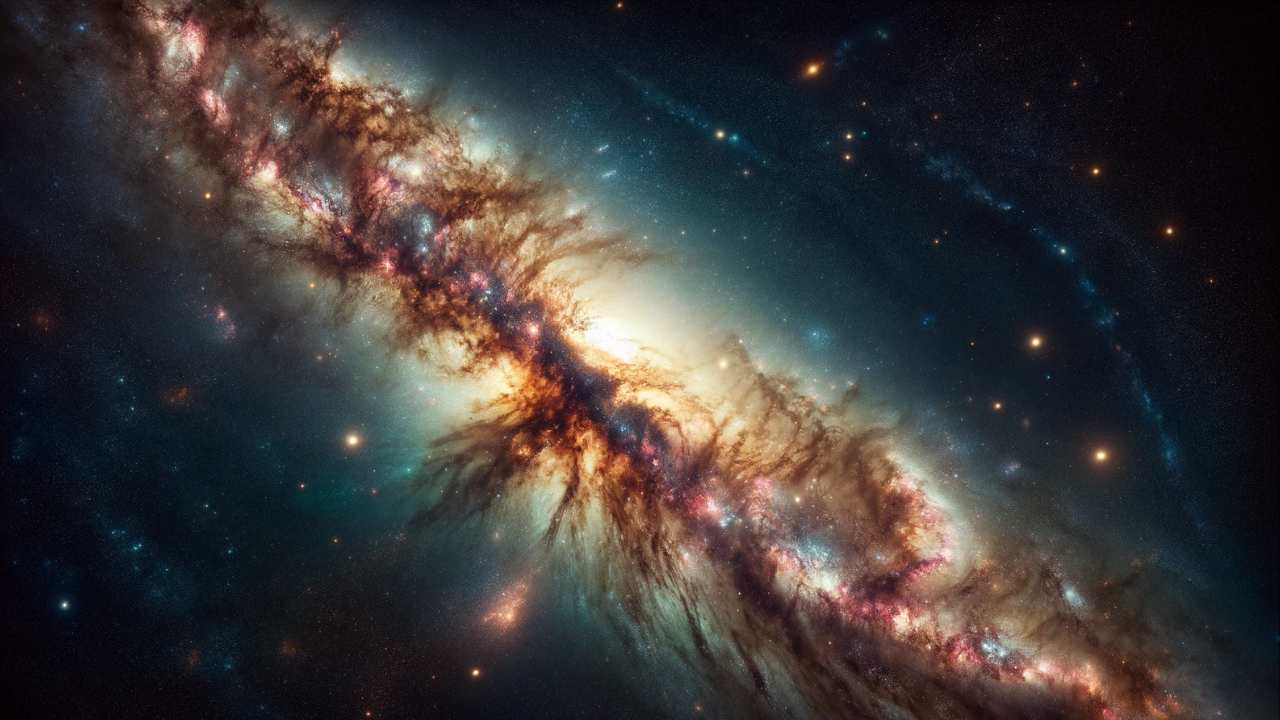“Join NASA’s groundbreaking journey with the Nancy Grace Roman Space Telescope as it embarks on an unprecedented survey of the Milky Way. Discover how this mission aims to map over 100 billion cosmic objects, offering new insights into star formation, galactic evolution, and the intricate structure of our cosmic home. Explore the future of astronomy with this revolutionary survey.”

The Nancy Grace Roman Space Telescope’s Galactic Odyssey
In an ambitious leap toward understanding the cosmos, NASA’s Nancy Grace Roman Space Telescope team has unveiled plans for a groundbreaking survey that will offer an unparalleled glimpse into the plane of our Milky Way galaxy. This monumental endeavor, set to outstrip all previous astronomical surveys combined, aims to map an unprecedented number of stars and delve into the intricate tapestry of our galaxy like never before.
A Galactic Exploration Like No Other
At the heart of this cosmic quest is a survey that promises to peer deeper into the Milky Way’s plane than any attempt in the history of astronomy. “There’s a really broad range of science we can explore with this type of survey,” explains Catherine Zucker, an astrophysicist at the Center for Astrophysics | Harvard & Smithsonian, and co-author of the white paper outlining the survey’s potential. From the mysteries of star formation and evolution to the enigmatic dust between stars and the dynamic forces at the galaxy’s core, the scope of investigation is as vast as the universe itself.
A Collaborative Scientific Endeavor
Following a highly competitive call for ideas in 2021, the galactic plane survey emerged as the top-ranked submission. Now, the scientific community is banding together to design an observational program that will set the stage for the Roman Space Telescope’s launch by May 2027. This collaborative effort faces the challenging task of balancing coverage area against the depth of mapping across various filters, a dilemma highlighted by astronomer Robert Benjamin from the University of Wisconsin-Whitewater.
The Promise of Discovery
The potential of this survey is staggering. Spanning approximately 1,000 square degrees—equivalent to the area covered by 5,000 full moons—it could unveil over 100 billion cosmic objects. “That would be pretty close to a complete census of all the stars in our galaxy,” notes Roberta Paladini, a senior research scientist at Caltech/IPAC and the white paper’s lead author. Such a feat, achievable in merely a month with Roman, would have taken decades with the likes of the Hubble or James Webb space telescopes.
Challenges of Charting Our Cosmic Home
Despite the wealth of data gathered on distant galaxies, unraveling the structure of our own Milky Way presents unique challenges. The galaxy’s vast plane and the obscuring dust make detailed studies laborious. Observatories like the Spitzer Space Telescope have laid the groundwork, revealing star-forming regions across the galaxy. However, the fine details and broader overview necessary for comprehensive understanding have remained elusive—until now.

Roman’s Revolutionary Role
The Nancy Grace Roman Space Telescope is set to revolutionize our view of the Milky Way. With its expansive field of view, superior resolution, and the ability to see through cosmic dust, Roman is uniquely equipped for this task. By observing stars in both optical and infrared wavelengths, astronomers will gain insights into their temperatures, evolutionary stages, and much more, enabling detailed studies of star formation and the structure of our galaxy.
A New Chapter in Galactic Understanding
The survey will not only enhance our knowledge of the Milky Way’s bulge, bar, and spiral arms but will also “rewrite the 3D picture of the far side of the galaxy,” as Zucker puts it. Roman’s capabilities extend far beyond those of previous missions, such as ESA’s Gaia space mission, allowing it to map stars up to 100,000 light-years away and beyond. This will result in a vast new catalog of stars, enriching our understanding of the cosmos.
Empowering Astronomical Discoveries
The Galactic Plane Survey represents just the beginning of the Roman Space Telescope’s journey into the unknown. Allocating at least 25% of its five-year primary mission to general astrophysics surveys, Roman will open new avenues for scientific inquiry, inviting astronomers worldwide to propose cutting-edge research. This global collaboration will harness Roman’s full potential, ushering in a new era of extraordinary scientific discovery and deepening our connection to the cosmos.
